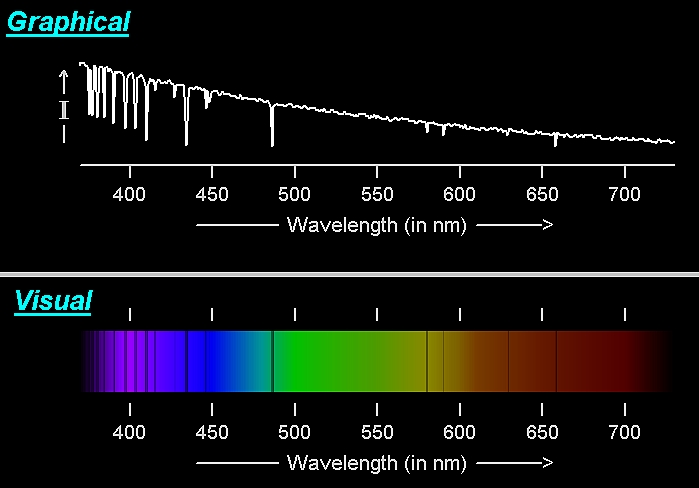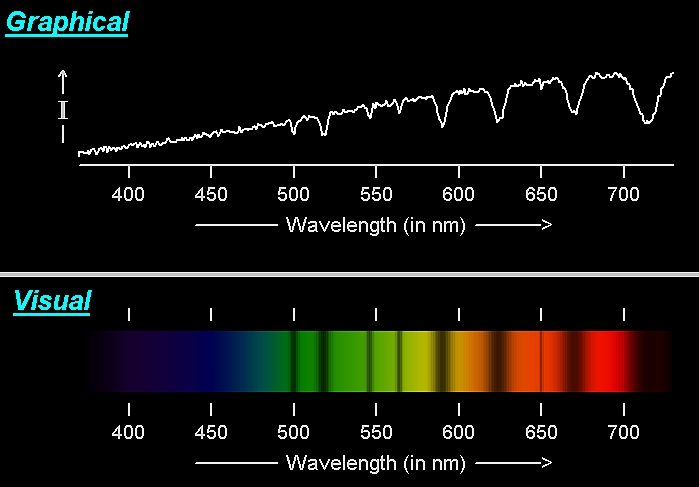Solar Luminosity
The Solar luminosity is, in principle, easy to find once the Astronomical
Unit (A.U.) is known. The Astronomical Unit is
the average of the closest distance and greatest distance the Earth
assumes as it orbits the Sun. To understand how this done, consider the
following.
Recall the inverse square law:
 |
The brightness of the Sun falls off as 1/D2 and
so if we know the distance to the Sun we can infer its true brightness from
its measured brightness. The most direct way to determine stellar distances
is annual trigonometric parallax.
Seems straightforward enough, are there other
problems? |
Yes, we need to know the total flux from the Sun or star
(which is referred to as the
bolometric flux):
Looking at the hot star on the left, we see that its (Rigel's) spectrum
peaks in the UV, outside of the visible band of the spectrum. We need to
get above the atmosphere to measure the bulk of its energy. The cool star
on the right (Antares) has a spectrum which peaks longward of the optical
portion of the spectrum. We need to somehow measure its spectrum out into the
IR.
The atmosphere of the Earth only
allows the visible and radio (plus some bands in other wavelength regions
to hit the Earth's surface) and so, in order to measure the bolometric
luminosity of the Sun one must send probes
above the Earth's atmosphere to measure the
Solar spectrum. Once this is done we can then
use our knowledge of the Astronomical Unit to infer that the
Solar luminosity is 3.84x1026 Watts.
This is the way in which other star's luminosities must also be
determined. The bolometric flux is always difficult to measure, but
the major
difficulty is finding accurate distances to stars. What is the current
source of most direct determinations of distances (and hence, luminosities)?
HIPPARCOS
Hipparcos was launched by the European Space Agency (ESA) in 1989,
operating until 1993. It was the first space experiment devoted to
precision astrometry. This permitted the
accurate determination of proper motions and parallaxes of stars,
allowing a determination of their distance and tangential velocity.
When combined with radial velocity measurements from spectroscopy, this
pinpointed all six quantities needed to determine the motion of stars.
The resulting Hipparcos Catalogue, a high-precision catalogue of more than
118,200 stars, was published in 1997. The lower-precision Tycho Catalogue
of more than a million stars was published at the same time, while the
enhanced Tycho-2 Catalogue of 2.5 million stars was published in 2000.
Hipparcos' follow-up mission, Gaia,
was launched in 2013.


